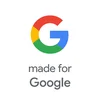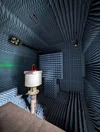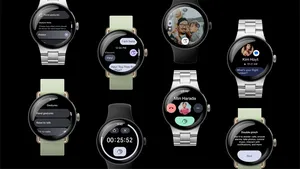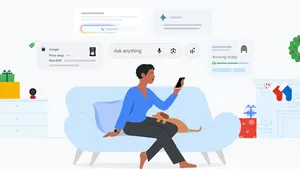How we test cases, cables and other accessories for your Google devices

Ali Khan and Chuck Nicketta think about new phones a little differently than most people — because their jobs focus on what’s going in, on, around, under, or in some other way accessorizing phones. “Let’s say you bend a charging cable like this,” Chuck says, holding up a cord to show me. "If you have a poorly designed plug connected to the phone, and you pull on the cable at an angle, the connector on the cable could break." But they aren’t just thinking about how accessories could damage phones: There are also screen protectors that could impact phone usage, or cases that degrade connectivity, or, well, lots of other things. “Our jobs are to help partners make accessories that complement consumers’ Google devices and are widely available,” Ali says. “And we work with partners around the world to make that happen.”
Ali and Chuck work together heading up Made for Google, a program that helps partners develop accessories for Google devices like Pixel phones, Pixel Buds, Pixel Watch, Nest devices and Fitbit wearables. By focusing on certifying a range of accessories, Made for Google partner accessories give Pixel users tons of options — and buyers can be confident that these cases, cables, mounts and whatever else will be high quality, totally compatible and perform well.
Made for Google provides partners with the device information and technical support they need in order to make sure everything they develop works seamlessly with Google devices. Once a product is thoroughly vetted, it receives the Made for Google badge — so buyers know what they’re getting passed the test. (Er, tests — there are many!)
“One of the biggest benefits of the Made for Google program is the testing,” Ali says. “In addition to lab testing, we test new products with Googlers, too, and we get incredibly detailed and insightful feedback. It can be things like, ‘Hey, I used this phone case and found that the color wore off after I kept it in my jeans pocket,’ or that it’s too difficult to press down on the power button.”
The point of testing is twofold, Chuck says: To make sure the accessory functions as expected, and to ensure it doesn’t damage or degrade the performance of the Google device it’s supporting. That means testers check on any range of things — for instance, making sure a Pixel phone case doesn’t make it hard to click the volume button, or that a stand for your Pixel Tablet isn’t blocking the speaker. Or, in the aforementioned example, that a cable won’t put unnecessary stress on a charging port. Chuck and Ali’s team also look at how a product is built to ensure it complies with Google’s safety and environmental specifications.
If an accessory has the Made for Google badge, you know it’s been through rigorous testing.

“It’s easy to put a plan together and say, ‘The accessory has to do this to get the badge,’” Chuck explains. “What’s harder is when you start putting accessories on devices, phones in particular, and testing each tiny technical area.” Different materials could interfere with the antenna, or a charger that’s not up to par might not charge your Pixel optimally.
The new Bellroy Leather Case in Biscotti for Pixel 8.
The new Mous Super Thin Magnetic Case for Pixel 8 in Olive Green.
Made for Google partners are even invited to visit Mountain View, where there’s a lab dedicated to testing new device accessories. “When partners are ready to validate, they can come here, where we have access to prerelease devices and all the testing equipment they need to validate products for certification,” Chuck says. That includes things like testing accessories with a Pixel phone for fit, imaging, display touch, power performance, and much more. “We designed a robotic machine that bends cables while plugged into a phone to ensure the cable doesn't degrade or damage the device's connector,” he says.
A look inside an antenna chamber where a Pixel device is being tested with an accessory to ensure no performance is lost.

The work that goes into making new accessories is an involved process — especially when new Google devices are launching every few months. Take, for example, the Casemate Signature Clear phone case, the Bellroy Leather Case and the Mous Thin Case — just a few of the new Made for Google accessories that launched alongside the new Pixel 8, Pixel 8 Pro and Pixel Watch 2. The manufacturers worked with Google teams to create cases that complement the design of the new phones, and to make sure the accessories would be fully compatible with all of Pixel’s features.
Made for Google’s high standards, and the testing and certification processes are incredibly thorough — and the end result is worth it. “If you see the Made for Google badge,” says Ali, “you know that accessory is going to be right for your device.”






